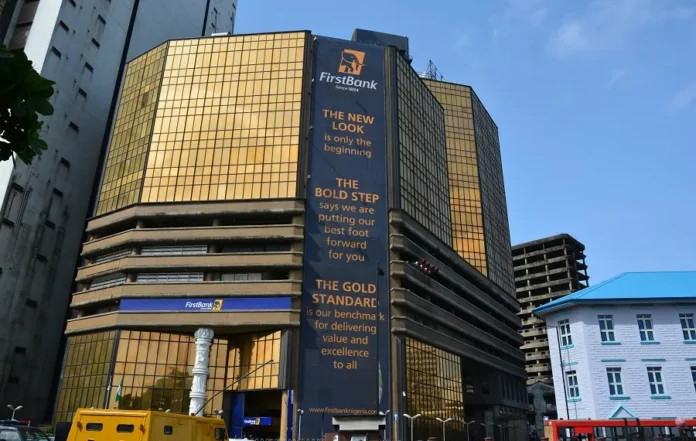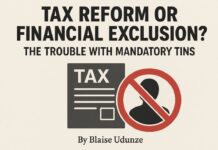FirstHoldCo ended 2024 with impressive earnings growth, driven by strong interest income and digital gains. However, rising impairments and asset quality issues cast a shadow over its performance. In this analysis, Abiodun Jimoh examines how the Holdco balances profitability, risk, and investor expectations in a changing financial landscape.
FirstHoldCo’s full-year 2024 earnings show a company leveraging macroeconomic headwinds to its advantage. In a volatile year defined by high interest rates, inflationary spikes, and capital market turbulence, the Holdco delivered a remarkable 123.63% growth in profit before tax, a feat that underlines the group’s expanding retail footprint and successful digital transition.
Gross earnings more than doubled, rising from N1.56 trillion in 2023 to N3.21 trillion in 2024, buoyed primarily by income from loans and investment securities. This leap demonstrates the effective deployment of interest-sensitive assets in an era when Nigeria’s monetary authorities maintained tight control over liquidity and inflationary trends. However, the rising rate environment also doubled the group’s impairment charges to N426.29 billion, revealing the cost of growth when credit risks become amplified.
Interestingly, FirstHoldCo benefited from reduced exchange rate volatility, which significantly curbed FX revaluation losses. In 2023, the group posted a loss of N334.23 billion from currency translation adjustments. That number dropped to N64.95 billion in 2024. This sizable relief protected bottom-line profitability, particularly when operating expenses spiked due to inflationary pressure. Maintenance costs, advertising, and regulatory obligations such as the AMCON levy pushed other operating expenses to N563.71 billion.
Despite these costs, the Holdco ended the year with a profit after tax of N677.01 billion, a figure that will likely boost investor confidence even though the dividend per share remained modest at N0.60k. Management has been clear: the conservative payout is a strategic move to shore up capital, especially with ongoing recapitalisation plans. The bank completed a rights issue in March 2025, raising N187 billion with a 25% oversubscription, out of which N147 billion has already been deployed. Another N350 billion is expected to be raised via a private placement soon. These initiatives will help FirstHoldCo meet regulatory capital benchmarks in a tightening financial services environment where new Basel III rules loom.
Total assets surged, with customer and bank deposits climbing to N17.17 trillion and N2.92 trillion respectively. The group’s appetite for credit exposure also expanded, with loans to customers hitting N8.77 trillion, while loans to banks rose to N3.30 trillion. Yet the relatively low loan-to-deposit ratio of 60.07% suggests cautious credit creation—perhaps in response to deteriorating asset quality, as reflected in the spike of the non-performing loan (NPL) ratio to 10.20%. Alarmingly, 50% of these bad loans stemmed from a single oil and gas client, according to the CEO. While the group has not publicly disclosed the client’s identity, this concentration risk could invite regulatory scrutiny and investor concern.
Still, the Holdco’s profitability ratios were commendable. Return on equity (ROE) rose to 24.22%, return on assets (ROA) climbed to 2.55%, and net interest margin improved to 7.30%. These indicators reveal strong earnings efficiency and point to the firm’s success in translating top-line growth into meaningful shareholder value. Meanwhile, the cost-to-income ratio fell to 43.30%, a strong signal that income growth outpaced cost escalation—a vital metric in an inflationary setting.
Valuation ratios, however, told a different story. The group’s price-to-earnings (P/E) ratio dropped from 2.75x in 2023 to 1.32x in 2024, while price-to-book value (P/BV) slipped from 0.57x to 0.37x. These figures suggest a disconnect between the group’s operational performance and market perception. It could reflect lingering investor anxiety about the macroeconomic environment, potential FX volatility ahead, or even concerns about the group’s ambitious capital plans—particularly the controversial 44-story head office project at Eko Atlantic City.
That project has stirred debate in investment circles. Analysts caution that the capital-intensive nature of the building, if not properly amortised, could burden the group’s earnings over time. However, FirstHoldCo clarified during its investor call that the land was purchased 15 years ago and that construction costs will be capitalised over several years. This accounting treatment should shield immediate profits but does little to deflect attention from the optics of such a high-profile investment amid asset quality concerns.
Market sentiment toward the group remained volatile throughout 2024. Share prices opened the year at N23.65 and peaked at N43.95 in March. Following a dip, the stock bottomed at N18.50 in late April before rebounding to close at N28.05. That performance equates to an 18.60% return in 2024 but a year-to-date loss of -15.33% as of April 22, 2025. Investors appear to be navigating between optimism over strong earnings and caution over structural risks.
In summary, FirstHoldCo’s 2024 performance is a compelling case study in resilience and strategy. The group used the high-interest rate climate to its advantage, expanded its digital and retail franchise, and delivered exceptional earnings growth. Yet, its elevated NPL ratio, market valuation gaps, and capital expenditure plans pose questions about sustainability and investor confidence in the medium term.
What happens next depends on a few key things. First, how quickly can the group wrap up its capital raise? Second, will it succeed in derisking its loan book—particularly in oil and gas? Third, can it balance profitability with its ambitious infrastructure investments?
Investors will be watching.














